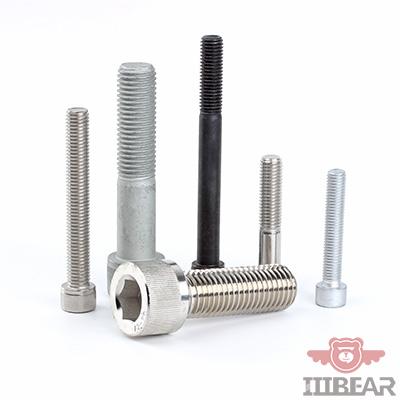Hex socket bolts, also known as socket head cap screws, are versatile fasteners widely used in industries ranging from automotive to aerospace. Their unique design, featuring a cylindrical head with a hexagonal socket, allows for high torque application and a sleek, low-profile appearance. In this guide, we’ll dive into the types of hex socket bolts, their applications, installation techniques, and tips for selecting the right bolt for your needs.

1. What Are Hex Socket Bolts?
Hex socket bolts are fasteners characterized by their cylindrical head and internal hexagonal drive. They are typically made from high-strength materials such as alloy steel, stainless steel, or titanium, making them suitable for heavy-duty applications. The internal hex drive allows for precise torque application, reducing the risk of stripping or damaging the bolt head.
These bolts are available in various standards, including DIN 912 and ISO 4762, which define their dimensions, tolerances, and mechanical properties. Common sizes range from M3 to M24, with lengths tailored to specific applications.
2. Types of Hex Socket Bolts
Hex socket bolts come in several types, each designed for specific applications:
-
Socket Head Cap Screws: The most common type, featuring a cylindrical head and a flat bearing surface. Ideal for applications requiring a low-profile fastener.
-
Button Head Socket Screws: These have a rounded head, providing a more aesthetic finish while still offering high strength.
-
Flat Head Socket Screws: Designed with a conical head that sits flush with the material surface, making them perfect for countersunk applications.
-
Shoulder Screws: Feature a cylindrical shoulder between the head and thread, often used in rotating or pivoting applications.
Each type is suited to different scenarios, from machinery assembly to precision engineering.
3. Applications of Hex Socket Bolts
Hex socket bolts are used in a wide range of industries due to their strength, precision, and compact design. Here are some common applications:
-
Automotive Industry: Used in engine components, transmissions, and suspension systems due to their high tensile strength and resistance to vibration.
-
Aerospace: Hex socket bolts are essential in aircraft assembly, where lightweight, high-strength fasteners are critical.
-
Machinery and Equipment: Ideal for securing heavy machinery parts, ensuring reliable performance under high stress.
-
Electronics: Their low-profile design makes them suitable for compact electronic devices and enclosures.
-
DIY and Home Improvement: Perfect for projects requiring a clean, professional finish, such as furniture assembly or custom fabrication.
4. Benefits of Hex Socket Bolts
Hex socket bolts offer several advantages over traditional fasteners:
-
High Torque Application: The internal hex drive allows for precise tightening, reducing the risk of damage.
-
Low-Profile Design: The cylindrical head sits flush or slightly above the surface, making them ideal for tight spaces.
-
Strength and Durability: Made from high-quality materials, these bolts can withstand heavy loads and harsh environments.
-
Aesthetic Appeal: Their sleek design provides a clean, professional look for visible fasteners.
-
Versatility: Available in various types, sizes, and materials to suit diverse applications.
5. Installation Tools and Methods
Proper installation is crucial to ensure the performance and longevity of hex socket bolts. Here’s a step-by-step guide:
-
Select the Right Tool: Use a hex key (Allen wrench) or a socket wrench with a hex bit that matches the bolt size.
-
Prepare the Surface: Ensure the materials being fastened are clean, aligned, and free of debris.
-
Insert the Bolt: Place the bolt through the pre-drilled hole and secure it with a nut or threaded hole.
-
Tighten: Apply torque gradually, following the manufacturer’s specifications to avoid over-tightening.
-
Inspect: Check the connection for stability and ensure the bolt is securely fastened.
For high-stress applications, consider using thread-locking compounds or washers to prevent loosening over time.
6. Choosing the Right Hex Socket Bolt
Selecting the appropriate hex socket bolt involves considering several factors:
-
Material: Choose between alloy steel, stainless steel, or titanium based on the environment and load requirements.
-
Size and Length: Ensure the bolt diameter and length match the application’s specifications.
-
Head Type: Select flat head, button head, or socket head based on the desired finish and space constraints.
-
Coating: Opt for coatings like zinc plating or black oxide for added corrosion resistance.
For example, if you’re working on a marine project, stainless steel hex socket bolts with a corrosion-resistant coating would be ideal.
Conclusion
Hex socket bolts are indispensable fasteners in numerous industries, offering a combination of strength, precision, and versatility. By understanding their types, applications, and installation methods, you can make informed decisions that ensure the success of your projects.

